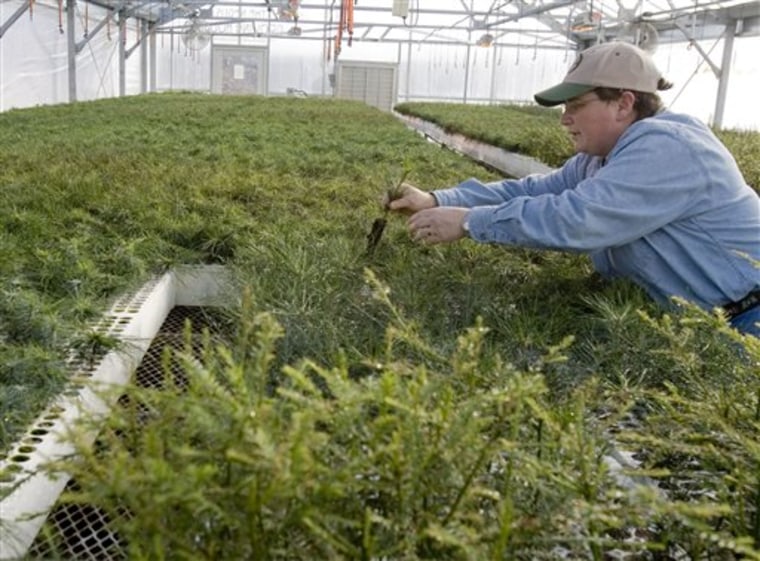During the Dust Bowl in the 1930s, Arbor Day organizers planted millions of trees to stop devastating soil erosion on the Great Plains.
Now, the Nebraska-based National Arbor Day Foundation has turned its attention to global warming and is teaming up with a company whose lifeblood is putting cars and trucks on the road.
Enterprise Rent-a-Car Co. has pledged $50 million over the next half century to help the foundation and the U.S. Forest Service plant 50 million trees to combat deforestation, driven most recently by devastating wildfires in the West.
Trees absorb carbon dioxide, a so-called greenhouse gas believed by many scientists to be the primary cause of global warming.
The fact that Enterprise — which buys more than 800,000 vehicles a year — contributed to the problem of global warming is not lost on the Jack Taylor family, which founded and runs the privately held rental car company, said spokesman Pat Farrell.
The pledge — as the company marks 50 years in business — is indicative of the Taylor family's commitment to giving back to the community and the environment, he said.
"It's a way of saying `thank you' for the first 50 years, with a commitment for the next 50 years," he said.
50 Million More Trees
The Arbor Day organization has a long history of helping the Forest Service with replanting efforts, foundation president John Rosenow said. But with the federal agency embroiled in expensive firefighting efforts, it has found itself more than ever in need of outside help for replanting forests.
Last year alone, 9.6 million acres of public and private forest lands were burned in the United States — a single-year record, Forest Service Chief Dale Bosworth said. But the service is allotted only $10 million for reforestation out of a $5 billion annual budget.
Bosworth is hoping that Enterprise's pledge will lead to more corporate participation in reforestation.
"Tree planting is particularly important right now, and I think it will continue to be important, because I don't see any let-up in terms of the fires," he said.
Every dollar of the Enterprise pledge will cover the costs of growing and planting one seedling, no more than a foot tall. But as the cost of cultivating and planting grows, so too will Enterprise's pledge, Farrell said.
"The pledge is not for $50 million; it's for 50 million trees," he said. "So, in the long run, there's no doubt the total pledge will end up being more than $50 million."
Its promise to plant one million trees a year is comparable to "planting a new Central Park every 10 days for the next 50 years," the company says on its Web site, noting that New York's Central Park has 25,000 trees.
Reforesting Past Wildfires
Rosenow said the effort highlights what the National Arbor Day Foundation does best — plant trees.
The foundation's roots go back nearly 135 years when the first Arbor Day was celebrated in Nebraska in 1872, in response to a state proclamation urging settlers to plant trees that would provide shade, fruit, fuel and beauty for residents of the largely treeless Plains.
On that first Arbor Day, more than one million trees were planted in the state.
First lady Laura Bush has gotten behind the foundation's latest project. Last fall, she attended a ceremony in Missouri's Mark Twain National Forest to plant the first of the 50 million trees.
More than 900,000 seedlings will be planted this spring in four national forests in the western United States, while another 40,000 seedlings will be planted each in Scotland and Canada, Rosenow said.
The foundation and Enterprise, with input from the U.S. Forest Service, selected those areas because of destruction they suffered in wildfires last year.
